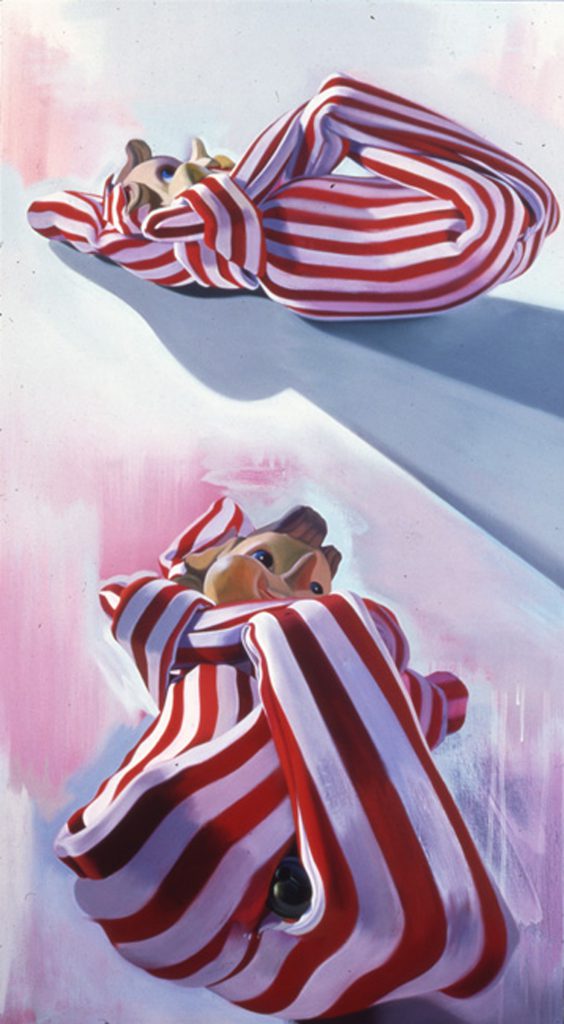Brett Reichman at Rena Bransten
Artforum – September 1997
by Maria Poges
A recurring leitmotif of much recent art is a vision of childhood as paradise lost, in which toys, scuffed animals, and even children themselves seem to have run amok. Often the impetus for this kind of work appears to be a kind of mourning for a collective loss of innocence: a longing for something irretrievably destroyed, presumably by “modern life.” Yet this kind of work is sometimes generated by much more complicated and interesting emotions and ideas. Brett Reichman’s paintings of elfin characters, for instance, may exude a palpable melancholy, but a closer examination of these profoundly seductive compositions yields a number of thoughtful, additional readings.
To begin with, the cartoonish, ornate, vividly hued baroque motifs that often appear in these paintings offer a sharp-edged commentary on our culture-wide obsession with appearances—especially when contrasted with Reichman’s puppets, pixies, and dwarves, smiles frozen on their stylized faces in a rictus of woebegone hilarity. In some cases, the elaborate mirrors, keyholes, or architectural elements of which Reichman is so fond serve as sets and props; in others, these horror-vacui flourishes, painted in the black-limned, spectral hues of an animator’s palette, become the primary subject of the canvases they fill. Conversely, a number of works feature puppets or pixies all by themselves, sans a single rococo touch. The suffocatingly shallow space they occupy seems to push forward around them, due to his skillful manipulation of values. This uncomfortable figure-ground relationship (suggesting, in a way, a kind of diabolical power-struggle) is typical of Reichman’s work. In “Sleepy Hollow,” 1996, a riot of scrollwork fills the canvas edge to edge, in a Dürer-esque version of the gates of Hell. The eerily-glowing spaces between these entwined forms take on an alarmingly palpable presence, making it difficult to tell whether hole or flourish is supposed to be the subject of our contemplation. Clearly, Reichman is suggesting that, despite our best efforts to clutter our lives with meaningless activities and objects, unfillable gaps always remain.
In the past, much has been made of Reichman’s references, veiled or otherwise, to gay subculture and the risks and dangers—both physical and emotional—of relationships. Seen through this particular filter, the splintered and knotted puppets in “Ringing the Bell Backwards,” 1997, allude to the elusive, inaccessible nature of happiness—even of simple pleasure. Still, the little bell/anus tucked between the lower figure’s legs is a reminder that here, as with most thoughtful work, there are unexpected rewards in unconventional points of view. As alter egos, these little clowns seem surprisingly universal, their woeful predicaments accessible and painfully touching.
